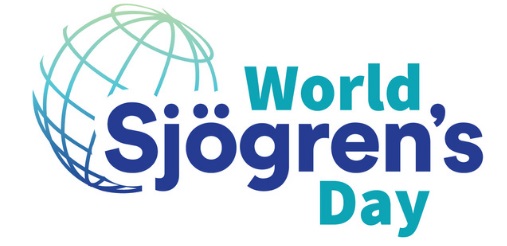July 23rd is observed as World Sjögren’s Day, a global initiative aimed at raising awareness about Sjögren’s syndrome, an autoimmune disease that affects millions of people worldwide. Named after the Swedish physician Henrik Sjögren, who first described the condition in the early 20th century, Sjögren’s syndrome primarily targets the body’s moisture-producing glands, leading to symptoms such as dry mouth, dry eyes, and joint pain. World Sjögren’s Day is an opportunity to educate the public, support those affected by the condition, and advocate for research and better treatments.
Understanding Sjögren’s Syndrome
What is Sjögren’s Syndrome?
Sjögren’s syndrome is an autoimmune disorder in which the immune system mistakenly attacks the body’s moisture-producing glands. This results in chronic dryness in various parts of the body.
- Primary vs. Secondary Sjögren’s Syndrome:
- Primary Sjögren’s Syndrome: Occurs as an independent condition without the presence of other autoimmune disorders.
- Secondary Sjögren’s Syndrome: Occurs alongside other autoimmune diseases, such as rheumatoid arthritis or lupus.
- Symptoms: The primary symptoms of Sjögren’s syndrome include:
- Dry Mouth (Xerostomia): Difficulty in speaking, swallowing, and tasting, along with an increased risk of dental cavities and oral infections.
- Dry Eyes (Xerophthalmia): Sensitivity to light, blurred vision, and a gritty or burning sensation in the eyes.
- Joint Pain and Fatigue: Aching or swelling in the joints and persistent fatigue.
- Other Symptoms: Sjögren’s syndrome can also cause dryness in other areas, such as the skin and vaginal tissues, and may affect the kidneys, liver, and lungs in more severe cases.
Diagnosis and Treatment
- Diagnosis: Diagnosing Sjögren’s syndrome can be challenging as its symptoms often overlap with other conditions. Diagnosis typically involves:
- Medical History and Symptoms: Assessment of symptoms and medical history.
- Blood Tests: To check for specific autoantibodies and other markers.
- Salivary and Tear Tests: To measure the flow of saliva and tears.
- Biopsy: In some cases, a biopsy of the lip or salivary gland may be performed to confirm the diagnosis.
- Treatment: There is no cure for Sjögren’s syndrome, but treatments focus on managing symptoms and improving quality of life. Common treatments include:
- Artificial Tears and Saliva Substitutes: To alleviate dryness and discomfort.
- Medications: Anti-inflammatory drugs, immunosuppressants, or medications to stimulate saliva production.
- Lifestyle Adjustments: Dietary changes, oral hygiene practices, and regular eye and dental care.
Observing World Sjögren’s Day
Raise Awareness
- Educational Campaigns: Use World Sjögren’s Day to educate the public about Sjögren’s syndrome. Share information through social media, blogs, and community events to increase understanding of the condition and its impact.
- Support Organizations: Partner with organizations dedicated to Sjögren’s syndrome, such as the Sjögren’s Syndrome Foundation or the Sjögren’s Society. Support their initiatives and share their resources to help spread awareness.
Support Those Affected
- Patient Support Groups: Participate in or organize support groups and forums for individuals living with Sjögren’s syndrome. These groups provide a space for sharing experiences, offering advice, and building a supportive community.
- Healthcare Providers: Encourage healthcare professionals to offer educational resources and support for patients with Sjögren’s syndrome. Regular check-ups and personalized care plans are essential for managing the condition effectively.
Advocate for Research and Funding
- Research Support: Advocate for increased research funding and support for Sjögren’s syndrome. Highlight the need for more effective treatments, better diagnostic tools, and ultimately a cure.
- Fundraising Events: Organize or participate in fundraising events, such as charity walks, auctions, or benefit dinners, to support research and support services for Sjögren’s syndrome.
Living with Sjögren’s Syndrome
Managing Symptoms
- Hydration: Staying well-hydrated is crucial for managing dry mouth. Drink plenty of water and use saliva substitutes as recommended by a healthcare provider.
- Eye Care: Use artificial tears regularly to relieve dry eyes. Avoid irritants such as smoke or dust and consider using a humidifier to maintain moisture in the air.
- Pain Management: Employ strategies for managing joint pain, such as exercise, physical therapy, and medications. Consult with a rheumatologist for personalized treatment options.
Emotional and Social Support
- Mental Health: Living with a chronic condition like Sjögren’s syndrome can affect mental health. Seek counseling or therapy if needed and connect with support groups to share experiences and receive emotional support.
- Social Activities: Engage in activities and hobbies that bring joy and satisfaction. Maintaining a positive outlook and staying active can improve overall well-being.
The Future of Sjögren’s Syndrome Care
Advancements in Research
- Innovative Treatments: Ongoing research is exploring new treatments and therapies for Sjögren’s syndrome, including targeted biologic therapies and advanced diagnostic techniques.
- Clinical Trials: Participation in clinical trials can provide access to cutting-edge treatments and contribute to the advancement of knowledge about Sjögren’s syndrome.
Increased Awareness
- Public Engagement: Continued efforts to raise awareness about Sjögren’s syndrome are essential for improving diagnosis and treatment. Increased visibility helps reduce stigma and promotes understanding of the condition.
- Collaborative Efforts: Collaboration between patients, healthcare providers, researchers, and advocacy organizations is key to advancing care and finding effective solutions for Sjögren’s syndrome.








